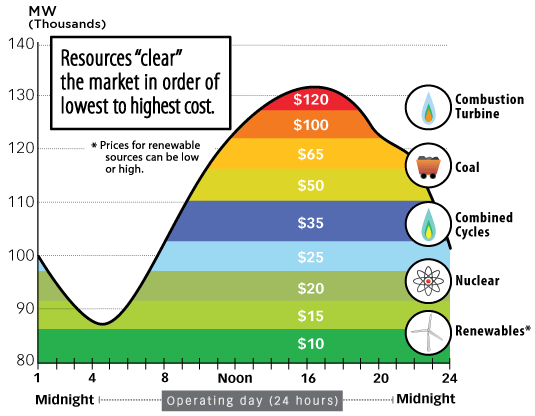How PJM Schedules Generation to Meet Demand
A day ahead of time (for example, on a Monday to prepare for Tuesday), PJM schedules the lowest-cost generation to be available to meet the forecasted electricity usage for the next day plus a reserve amount (electricity supplies that currently are not being used but can be quickly available in the case of unexpected loss of generation). A majority of the power scheduled is from generating units that normally run 24 hours per day, seven days a week. This is called base load generation, typically nuclear and large coal-fired generators. Because the amount of electricity used changes during the day (following what is known as the load curve), using only base-load generation is not the most economical option.
PJM uses generators with short start-up times (smaller, fast-starting gas, hydroelectric or oil-fired generators) and short minimum run times to meet electricity demand at peak usage times of the day.

The cost to operate varies from generator to generator based on factors such as the type of fuel used, efficiency of the generator and start-up costs. PJM selects and utilizes the least expensive resources first to meet energy demand. As energy demand increases, generators that are more expensive to operate are used, which increases the wholesale price of electricity called the Locational Marginal Price (the price that reflects the cost of energy at a specific location at the time that it is delivered). PJM assesses this economical mix of generation to ensure the forecasted electricity use and desired reserve amounts can be met and schedules additional generation as needed.